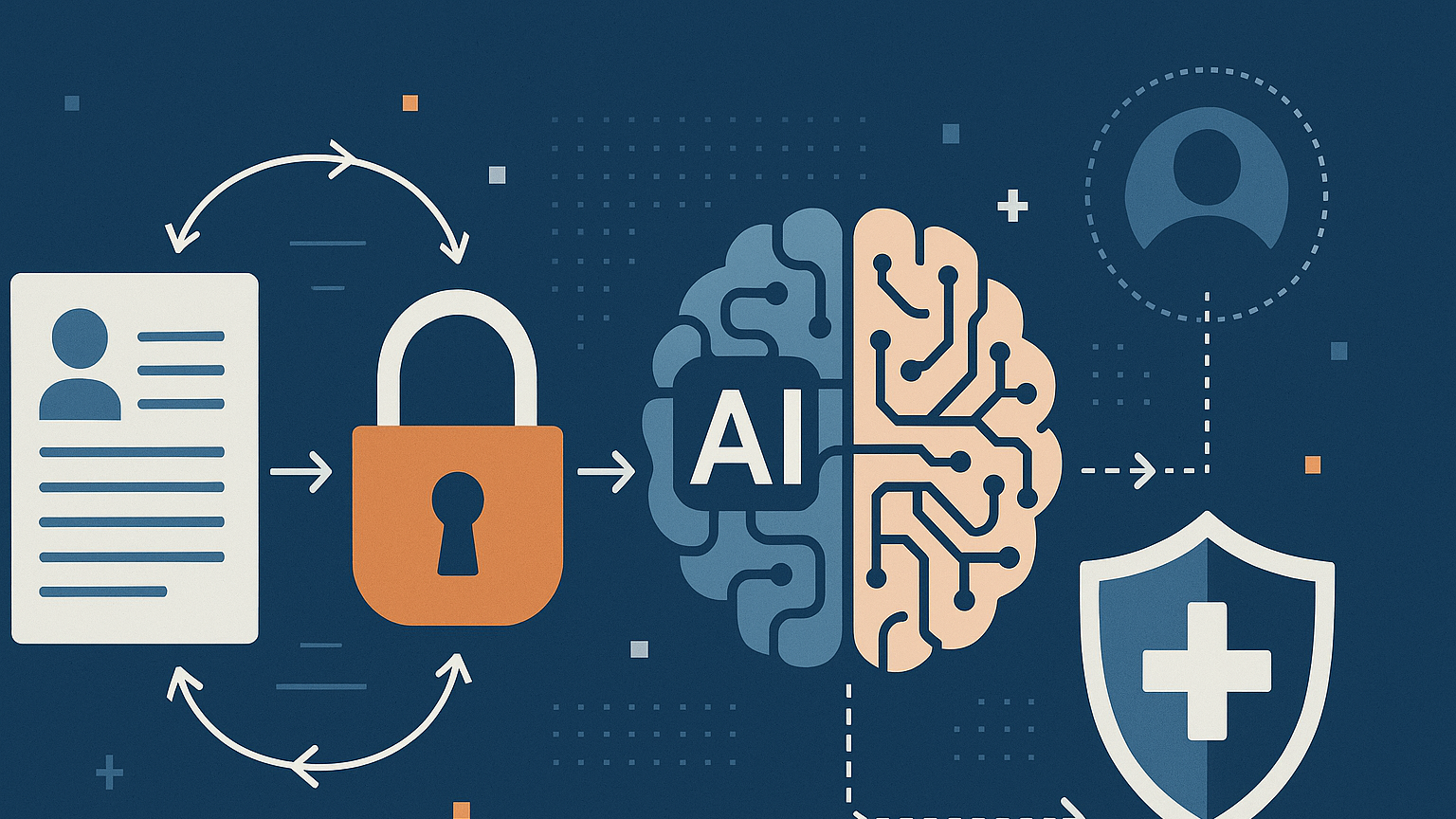
AI and Patient Privacy Considerations for Healthcare Regulatory Compliance
You’re navigating an era where AI is reshaping how healthcare organizations operate, diagnose, and deliver care. As you adopt AI tools—from predictive analytics that forecast patient deterioration to NLP systems that extract insights from clinical notes—you must balance innovation with a strict duty to protect patient privacy and meet regulatory obligations. This article walks you through the practical, technical, and regulatory privacy considerations you need to ensure your AI deployments remain compliant, trustworthy, and clinically useful.
Why this matters to you now
You’re likely feeling pressure to adopt AI to improve outcomes, reduce costs, or streamline workflows. But AI also introduces new privacy risks and compliance complexities that can have legal, financial, and reputational consequences if mishandled. Understanding these risks and implementing the right governance, technical controls, and processes will let you harness AI’s benefits while maintaining patient trust and staying on the right side of regulators.


The regulatory landscape you operate in
You work across a complex regulatory terrain that often overlaps, and sometimes conflicts, depending on where your organization operates or where patient data crosses borders. Knowing the key frameworks helps you design compliance into AI systems from the start.
HIPAA (United States)
If you handle protected health information (PHI) in the U.S., HIPAA sets baseline privacy and security requirements. You need to ensure safeguards for PHI used by AI systems, whether on-premises or in the cloud, and establish Business Associate Agreements (BAAs) with vendors that process PHI on your behalf.
GDPR (European Union)
Under the GDPR, health data is a special category requiring strict legal bases for processing and additional protections. When you use AI on EU patient data, you must address data minimization, lawful basis (often consent or public interest), transparency, and patients’ rights to access, rectify, or erase their data.
UK, Canada, Australia, and other jurisdictions
Each jurisdiction has nuances—like the UK’s Data Protection Act, Canada’s PHIPA/PIPEDA variations by province, and Australia’s Privacy Act—that you must consider. Stay aware of local consent requirements, retention rules, and data breach notification timelines as you design AI workflows.
Medical device and AI-specific guidance
Regulators like the FDA, EMA, and national health authorities increasingly treat some AI systems as medical devices, subjecting them to premarket review, clinical validation, and post-market surveillance. The EU AI Act and guidance on “Software as a Medical Device” (SaMD) add another layer of expectation around safety, explainability, and risk management that you’ll need to integrate into development and deployment.
Key privacy risks introduced by AI
AI adds unique vectors for privacy harm that you may not face with traditional IT systems. Recognizing these risks helps you prioritize mitigations.

Re-identification and linkage attacks
Even supposedly de-identified data sets can be re-identified when combined with other data sources. You need to assume that attackers can combine datasets to re-link records, especially when AI models are trained on rich clinical and social determinants data.
Model inversion and membership inference
Models can unintentionally reveal training data. Attackers can perform membership inference to determine whether a particular individual’s data was included in the training set, or model inversion to reconstruct sensitive attributes. You must evaluate models for these risks and apply technical countermeasures.
Data leakage through outputs and logs
Model outputs, debug logs, and telemetry can leak PHI. When your AI system returns explanations, highlights, or example cases, those outputs may expose identifiers or sensitive details unless you sanitize them consistently.
Function creep and secondary use
AI projects often evolve beyond their initial scope. Data collected for billing, quality improvement, or care coordination might be repurposed for analytics or commercial endeavors without appropriate legal basis or patient notification, creating compliance exposures.
Bias and differential impact
Privacy isn’t only about secrecy—it’s about equitable treatment. AI systems that systematically misrepresent or misclassify certain groups can cause privacy harms indirectly by exposing vulnerable populations to higher scrutiny, unnecessary interventions, or data sharing.
Data lifecycle considerations for AI
You should map out how data flows through AI systems to identify where privacy risks arise and where controls are most effective.

Collection and lawful basis
You must justify the collection of patient data for AI. Whether you rely on consent, contractual necessity, public interest, or legitimate interest depends on jurisdiction and use case. Where consent is used, it must be informed and specific to AI processing.
Data minimization and purpose limitation
Collect only what you need and limit use to defined purposes. Designing models and features with a strict data minimization mindset reduces downstream re-identification risk and simplifies compliance.
Storage, access control, and encryption
Store data securely with encryption at rest and in transit, enforce role-based access control (RBAC), and use least-privilege principles. You should log access and maintain an auditable trail for compliance and incident investigation.
Retention and deletion
Define and enforce retention policies aligned with legal requirements and clinical needs. Where possible, automate deletion or archival workflows to prevent unnecessary long-term exposure.
Sharing and third-party processing
Any sharing—internal with analytics teams or external with vendors—must be governed by contracts, BAAs, data processing agreements, and justified legal bases. Track data lineage so you know who has copied or processed the data and how.
Technical privacy-enhancing technologies (PETs)
You have a growing toolkit of technical controls to reduce privacy risk without sacrificing AI utility. Evaluate which techniques align with your privacy, performance, and clinical requirements.

De-identification and anonymization
Robust de-identification reduces identifiability, but you must understand its limits. Apply tested methods, maintain a risk-based approach, and document re-identification risk assessments. Pseudonymization can be useful when re-linkage is required for care, but it still counts as personal data under many privacy laws.
Differential privacy
Differential privacy provides formal mathematical guarantees against re-identification in aggregated outputs. Implementing differential privacy can protect models and analytics, especially when releasing statistics or sharing trained models, but you’ll need expertise to tune privacy budgets and measure utility loss.
Federated learning
Federated learning lets you train models across decentralized data sources without moving raw data. You’ll still need to manage model update privacy (aggregation leakage), secure communication, and governance of the federated protocol.
Homomorphic encryption and secure multiparty computation
These advanced cryptographic approaches let you compute on encrypted data or jointly compute results without exposing raw inputs. They can be heavy on compute resources today, but they offer strong privacy guarantees for specific, high-risk use cases.
Synthetic data
Synthetic datasets generated to mimic the statistical properties of real data can help with development or vendor evaluation. Evaluate synthetic data for fidelity and re-identification risk; poorly generated synthetic data can leak sensitive patterns if derived too closely from original records.
Model governance and documentation
You’re accountable for models that affect patient care or privacy. Good governance reduces risk and supports regulatory scrutiny.
Model cards, datasheets, and model registries
Document model purpose, training data characteristics, performance metrics, known limitations, and intended use. Maintain a model registry that tracks versions, provenance, and deployment status so you can audit behavior over time.
Explainability and transparency
Clinicians and regulators will ask why a model made a recommendation. Invest in explainability methods that are appropriate to the clinical task and communicate uncertainty. Explainability supports informed consent, clinician oversight, and regulatory submissions.
Validation and clinical performance monitoring
Before deployment, validate models on representative data and in real-world settings. After deployment, continuously monitor performance for drift, bias, and safety issues. Early detection of deteriorating performance protects patients and reduces legal exposure.
Change management and continuous learning models
If your model continues to learn in production, you must treat updates as significant changes requiring risk assessment, validation, and possibly regulatory re-submission. Implement controlled rollout strategies, rollback mechanisms, and documentation for each change.
Vendor management and third-party risk
You often rely on vendors for AI models, cloud compute, or analytics platforms. Effective oversight of third parties is non-negotiable for compliance.
Due diligence and contractual protections
Conduct privacy and security assessments of vendors before onboarding. Include BAAs, data processing agreements, liability clauses, audit rights, and contractual SLAs that specify data handling, breach notification, and subcontractor management.
Technical integration and secure deployment
Ensure vendor solutions integrate securely with your environments. Require encryption, secure APIs, authentication standards, and alignment with your IAM practices. Avoid sending full PHI to third parties unless absolutely necessary and contractually protected.
Ongoing vendor monitoring
Don’t treat vendor review as a one-time event. Perform periodic reassessments, require security attestations (SOC2, ISO 27001), and monitor performance against contractual obligations and regulatory changes.

Consent, patient rights, and transparency
You need to honor patient rights and design processes that maintain trust and legal compliance.
Informed consent for AI processing
Be clear about how you use patient data in AI systems and what the foreseeable impacts are. Consent for AI should be specific, understandable, and revocable where required by law. For operational uses like care coordination, you may rely on other legal bases but should still be transparent.
Access, rectification, and deletion rights
Patients can request copies of their data, corrections, or deletion in many jurisdictions. Ensure your systems can extract, correct, and delete data across AI pipelines and training sets where feasible. Document how you handle such requests when they intersect with model training and derived outputs.
Right to explanation and automated decision-making
In some jurisdictions, individuals have rights related to automated decision-making. Even if full legal rights vary, you should provide meaningful information about how AI affects care decisions and ensure human oversight where decisions have significant impact.
Security controls and operational practice
Security and privacy go hand in hand. You should implement robust security practices throughout AI development and deployment.
Identity, access, and authorization
Use strong identity controls, multifactor authentication, RBAC, and ephemeral credentials for AI workflows. Limit who can access raw data, model weights, or production endpoints.
Secure development lifecycle (SDLC) and MLOps
Integrate security into your MLOps pipelines: code reviews, dependency scanning, secrets management, and container hardening. Automate testing for privacy and security checks as part of CI/CD for models.
Logging, monitoring, and incident response
Instrument models and data access with comprehensive logging and monitoring. Your incident response playbook should cover AI-specific incidents like model theft, poisoning, or leakage, and define communication paths for regulators and affected patients.
Auditing, reporting, and documentation for regulators
You need to be audit-ready. Proper documentation and reporting simplify regulatory interactions and lower risk.
Data Protection Impact Assessments (DPIAs) and risk assessments
Conduct DPIAs for high-risk AI uses. DPIAs help you identify privacy risks, justify controls, and demonstrate compliance with GDPR and other frameworks that expect impact assessments for sensitive processing.
Audit trails and provenance
Keep records of data sources, consent status, model training runs, and configuration changes. Provenance tracking supports reproducibility and aids investigations when issues arise.
Breach notification and remediation
If a privacy incident occurs, you must follow jurisdictional breach notification timelines. Have playbooks that map detection to notification, corrective action, and public communications to reduce regulatory and reputational harm.
Addressing bias, fairness, and equity
Your privacy responsibilities expand to include fairness, because biased AI can produce discriminatory outcomes that disproportionately harm certain patient groups.
Measuring and mitigating bias
Assess model performance across demographic groups and clinical subpopulations. Where disparities appear, iterate on data sampling, feature engineering, or model design to reduce bias. Document your approaches and trade-offs for auditability.
Cultural competence and inclusive design
Involve clinicians, ethicists, and patient representatives during design and evaluation to ensure AI systems respect diverse needs and contexts. Inclusive design reduces privacy harms that arise from misunderstanding or misrepresenting patient populations.
Practical steps to operationalize privacy compliance with AI
You need actionable steps to translate these principles into practice. Here’s a pragmatic roadmap you can follow.
Establish governance and cross-functional teams
Set up an AI governance committee with representatives from legal, compliance, security, clinical leadership, data science, and operations. This team should oversee risk assessments, approvals, and monitoring.
Build standard operating procedures (SOPs)
Create SOPs for data handling, model validation, deployment, vendor onboarding, and incident response. SOPs make it easier to scale AI responsibly and keep teams aligned with regulatory needs.
Train staff and clinicians
Educate clinicians, data scientists, and operational staff about privacy obligations, secure handling of PHI, and how AI decisions should be interpreted in clinical workflows. Ongoing training reduces human-related privacy lapses.
Integrate privacy checks into project lifecycles
Make privacy impact assessments, security reviews, and legal sign-offs mandatory gates in any AI project lifecycle. Treat privacy as a quality attribute like performance or scalability.
Use privacy-friendly architectures
Prioritize architectures that minimize data movement, segregate environments for development and production, and apply privacy-enhancing technologies where appropriate. These choices reduce exposure and simplify compliance.
Practical checklist for your next AI project
Below is a compact checklist you can use before launching or scaling AI in your healthcare environment. Use it as a starting point and adapt it to your organization and jurisdiction.
- Document legal basis and consent for data use
- Conduct DPIA or risk assessment
- Implement encryption, RBAC, and logging
- Evaluate models for re-identification and membership inference risks
- Apply de-identification, differential privacy, or federated learning where suitable
- Establish vendor contracts with BAAs and audit rights
- Validate clinical performance and monitor post-deployment
- Maintain provenance, model cards, and training records
- Train staff and set up incident response procedures
Example scenarios and how you might handle them
Seeing concrete examples helps you translate theory into action. Here are a few scenarios you might encounter and practical responses you can adopt.
Deploying an AI triage system in the emergency department
You must ensure patient data used to train the triage model is appropriately de-identified or covered by consent/contractual basis. Validate the model on local ED data to confirm performance, set up clinician-in-the-loop workflows, and monitor for drift. Document the clinical validation and retain audit logs for regulator review.
Partnering with a cloud vendor for model training
Negotiate a BAA and require vendor SOC2/ISO attestation. Avoid sharing raw PHI if possible—use pseudonymization or synthetic data for development. Ensure encrypted storage and limit access to dedicated, audited accounts.
Sharing model outputs with external researchers
Apply differential privacy to released aggregate statistics and enforce data use agreements that prohibit re-identification attempts. Consider a secure enclave or remote analysis environment rather than distributing datasets.
Preparing for the future: what to watch
You don’t just need to comply today—you need to anticipate how the regulatory and technological landscape will evolve.
Regulatory tightening and new AI-specific laws
Expect more AI-specific regulations like the EU AI Act, tighter enforcement of privacy laws, and increased scrutiny from health regulators. Keep legal and compliance teams engaged in product roadmaps.
Advances in PETs and scalable privacy solutions
Privacy-enhancing technologies will mature and become more practical. Plan for migrating to federated approaches, better differential privacy libraries, and optimized cryptographic solutions as they become production-ready.
Interoperability and data portability expectations
As healthcare becomes more interconnected, regulators will emphasize interoperability and data portability while balancing privacy. Design systems to support secure data exchange that preserves patients’ control over their information.
Conclusion
You can adopt AI in healthcare while upholding patient privacy and meeting regulatory obligations, but it requires deliberate design, strong governance, and continuous oversight. Focus on mapping the data lifecycle, implementing technical protections, documenting decisions, and embedding compliance checks in your development processes. By doing so, you’ll unlock AI’s benefits safely and sustainably, protect patients, and reduce regulatory risk.
If you found this article helpful, please clap, leave a comment with your questions or experiences, and subscribe to my Medium newsletter for updates on AI, healthcare, and regulatory compliance.
